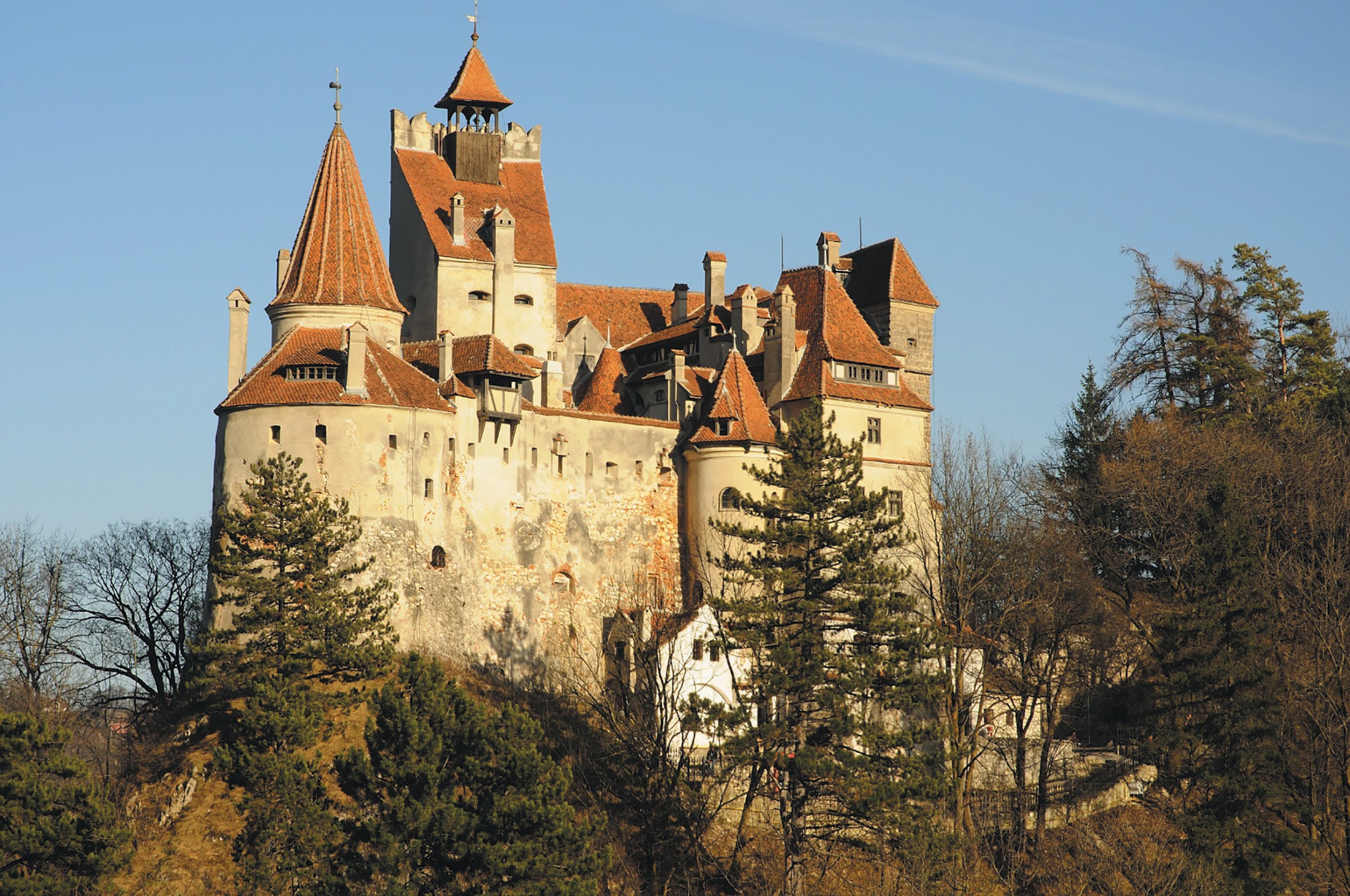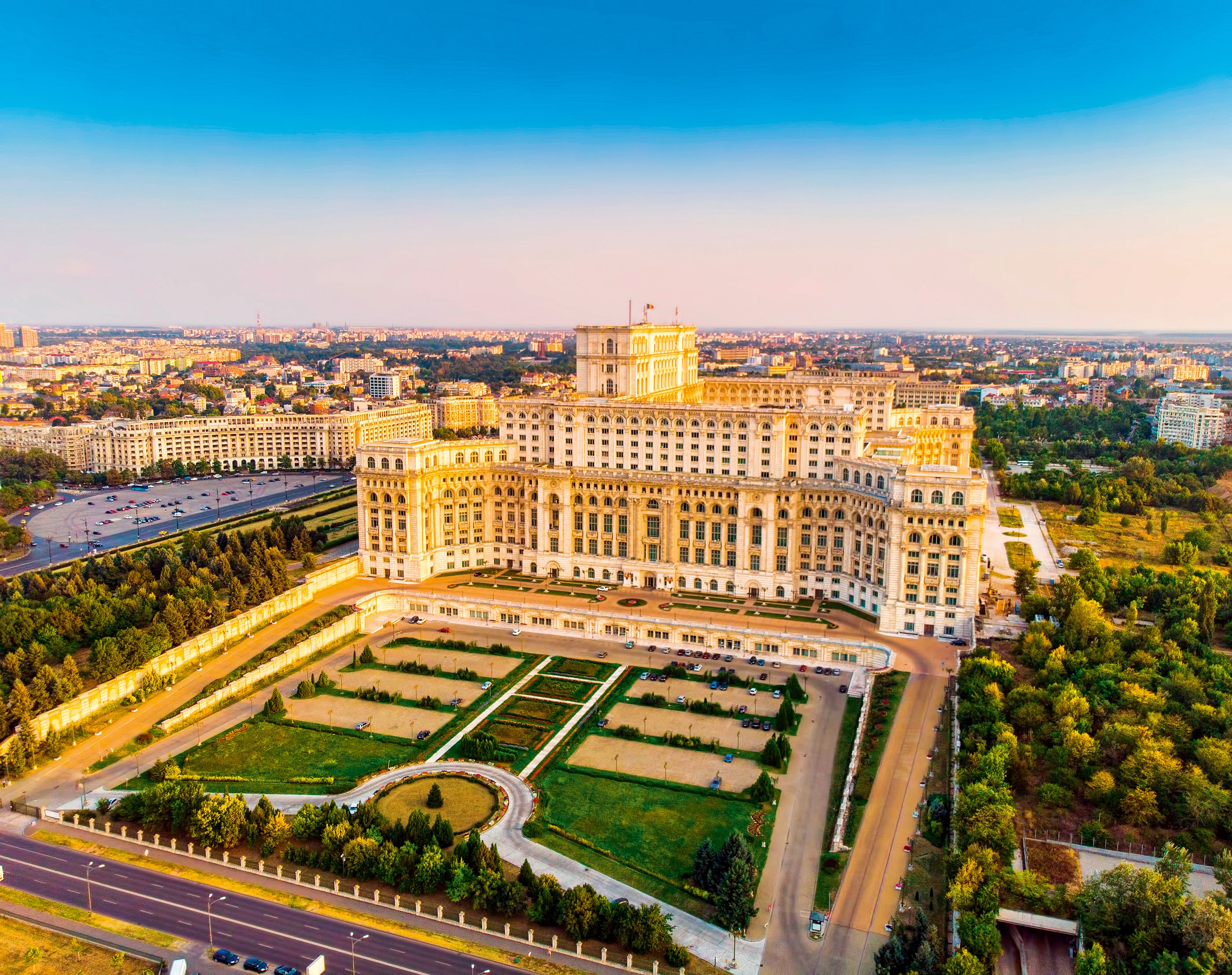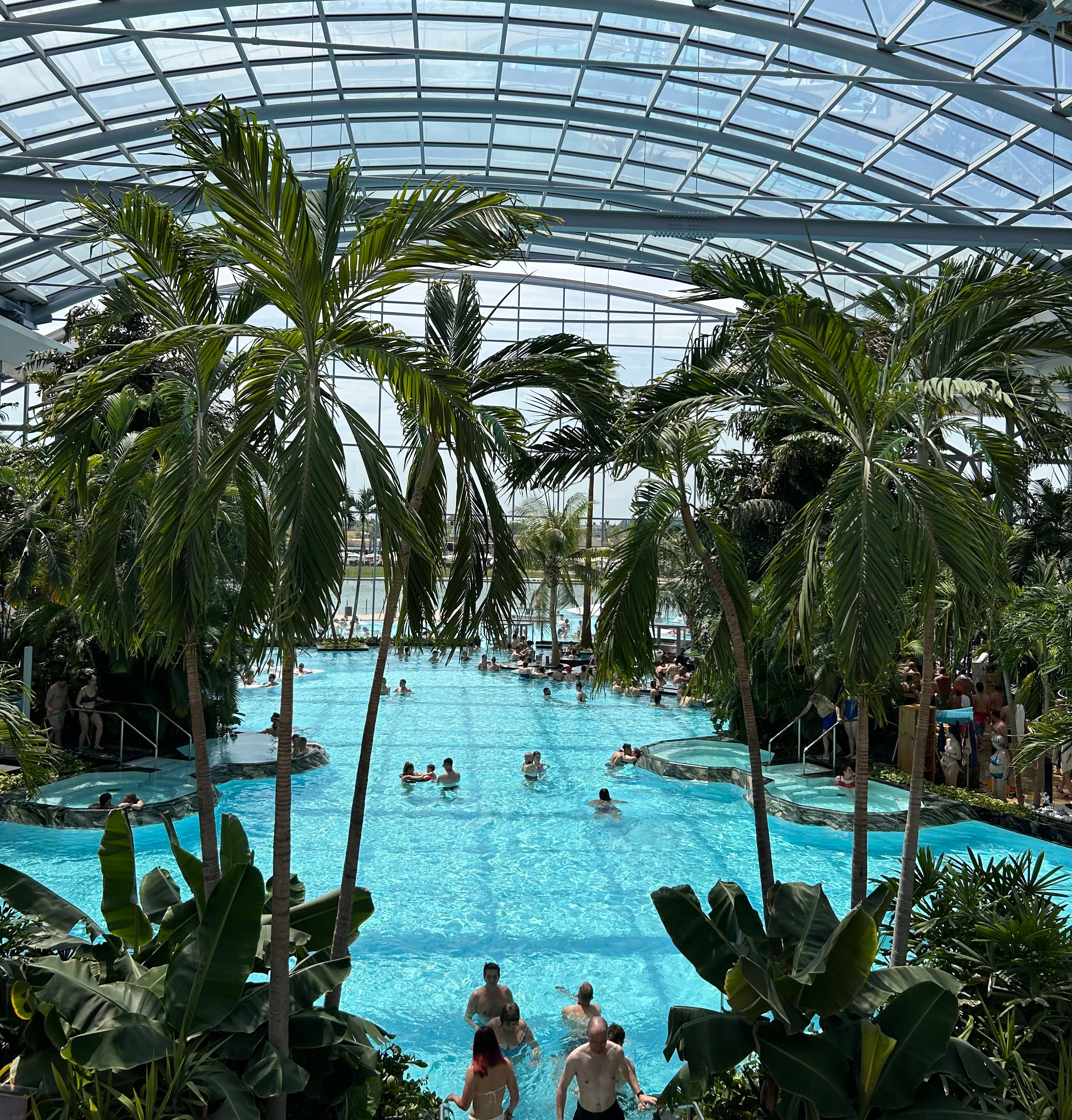I’m gazing at the blank horizon ahead of me, blurred by a haze of stifling 38C heat rising from flat farmland, when everything suddenly goes dark.
Adjusting my eyesight, I can just about make out rows of tall, slender pine trees rising from the deep, murky forest. It’s not hard to see why the Southern Carpathian mountains are the backdrop for so many eerie tales.
We’re driving through the Bucegi mountain range in Transylvania, an area in central Romania that’s home to medieval castles, astounding scenery and mystical folklore.
The largest of the Balkan countries, this southeast European country is a natural wonder of dramatic mountain scenery and a coastline lapped by the Black Sea. A troubled past and lack of infrastructure is likely responsible for the slow growth in tourism, but numbers of visitors are steadily rising; around 13.6 million visited in 2023 (although that’s still a fraction of Croatia’s 20.6 million for the same period in a country a quarter of the size).
Recognising the destination’s great value offerings (a pint of beer is around £2), package holiday giant Tui is promoting it as the place to visit this summer.
To date, Romania’s greatest tourism attraction is the myth of Dracula – which is why I’ve ended up in the Carpathian Mountains, a two-and-a-half-hour drive from the capital.
The region of Transylvania was the setting for Bram Stoker’s famed novel, Dracula. The titular character is often confused with Romanian prince, Vlad Tepes – commonly known as Vlad the Impaler, due to his bloodthirsty nature.

Read more on Europe travel:
The connection stems from his father Vlad II’s association with the Crusader Order of the Dragon, or ‘Dracul’ – which also translates to ‘the devil’. Vlad II claimed the moniker as his own, and became known as Vlad Dracul, and therefore ‘Dracula’ translates to ‘son of the devil’, a fitting tribute for the violent Vlad Tepes.
Stoker learned Vlad Tepes lived in a castle in the Transylvania region. Despite never visiting the area himself, his depiction of the castle in Dracula most closely resembles Bran Castle.
After surfacing from dark woodlands, we arrive at Bran, and I catch my first glimpse of the castle, perched atop a craggy rock face, its terracotta turrets glowing in the daylight.
Climbing the steps to the entrance, I breathe in the fresh air and survey the storybook surroundings made up of Alpine-esque woodland and a glacial lake. It really is magical.
Upon entering the castle, I nervously prepare myself for the dungeons and dark passageways. Instead, it’s cosy and intimate with bright airy rooms. Sunlight filters through the arched windows and illuminates the white walls and dark wooden floors, while gothic chandeliers and large fireplaces give the illusion of grandeur.
But Romania is about so much more than a fictional vampire. Keen to discover the country’s capital, once dubbed a ‘Paris of the East’, I book into the Novotel Bucharest City Centre.
More akin to a palace with a large balcony and glass arch doors, I’m awed by its opulence.
But nothing compares to the view from my sumptuous room, which overlooks a myriad of ornate and traditional buildings.
I take an evening tour of the city with local guide Dana. She explains urban planning was modelled on the French capital – explaining the romanticised moniker.
Its stone-hued buildings are a melting pot of Art Nouveau, gothic and neoclassical design. As we ramble through the city, I spot green spaces enclosed by decorative railings and tree-lined rivers. Eastern Orthodox churches, with their domed towers and bright colours, stand out like gemstones.
Sadly, many areas were demolished and rebuilt by notorious former communist dictator, Nicolae Ceaușescu. The greatest example of this injustice is the obscenely gargantuan Palace of Parliament, for which Ceaușescu sacrificed hospitals, factories and even people’s homes, plunging the country into debt.

I become acquainted with the consequences of Ceaușescu’s actions at Piata Revolutiei, or Revolution Square.
It’s home to the Palatul Ministerului de Interne, where Ceaușescu gave his final speech in December 1989, which triggered the Romanian Revolution. He was forced to flee the building via helicopter, and was subsequently executed for committing genocide.
There are pockets of Bucharest’s rich history still intact in its vibrant Old Town, including the walkway Pasajul Macca-Vilacrosse, a yellow-hued, glass-ceilinged arcade.
Once home to jewellery stores, it’s now a hubbub of bars and restaurants, decorated with climbing plants and strings of fairy lights. Velvet armchairs and low tables are arranged in the thoroughfare filled with palm plants and clouds of shisha smoke.
We make our way to Belle Epoque restaurant, Caru’ cu Bere, for traditional Romanian food.
Among the wood-panelled walls and lamplight, dancers clad in traditional attire perform a fast-paced jig as we eat. My pork steak with potatoes, beetroot tartare and baked pepper sauce is an affordable 86,00 lei (£14.59).
And while Romania is rich in history, there’s no way it’s stuck in the past. Opened in 2016, spa complex Therme Bucharest trumps any leisure centre I’ve ever laid eyes on.

Just 23km outside of Bucharest, Therme is located in the middle of vast acres of farmland. Alongside housing an outdoor beach, mineral and aromatherapy areas and therapy beds, it’s also packed with restaurants and bars, 10 thermal swimming pools heated at 30C, and over 1,500 exotic palm plants.
Admission on a weekend is only 73 lei (£12.38) for three hours, and after entering and changing, I head to the main pool area, the Palm.
For families, there’s also the Galaxy area, which includes a huge complex of 20 twisting slides and giant wave pool, and adult’s-own area, Elysium, with six different saunas to choose from.
After a day of swimming, I’ve worked up an appetite for a decent meal, so head to luxury Hotel Marmorosch’s restaurant, The Blank, located in a converted bank.
For my main course, I choose braised beef cheek with truffle mash and mustard jus (150 lei/£25.44) and round off the meal with a chocolate-glazed crème brûlée (55 lei/£9.33). The final bill is a snip of what I’d pay in a top London restaurant, making it the perfect finish to an incredibly affordable weekend.
I may not have met any real-life vampires, but my stay in Romania has been nothing short of… ‘fangtastic’.
How to do it
Tui offers a two-night city break to Bucharest, Romania, at the Novotel Bucharest City Centre (room-only) from £496 per person (based on two sharing); includes flights departing from London on 28 September 2024.

